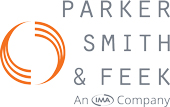Navigating Contracts: Builder’s Risk and Tenant Improvement Projects
February 29, 2024
Contractual risk transfer is a critical piece of risk management strategy and a very familiar one for contractors. As a contractor, there are many ways to mitigate your risk and protect your business when entering into contracts, and making sure you know about possible hidden risks can save you time and headaches. One of these ways is knowing how your client’s lease agreement is written when you are hired to perform tenant improvement work. Depending on your client’s business and their particular needs, tenant improvements can include a wide range of changes, such as interior renovations, partitioning of space, electrical and plumbing upgrades, installation of fixtures, and more.
As tenant improvement work in commercial spaces is on the decline due to high interest rates, contractors are vying for more work and competing against more bidders. This competitive landscape tends to tilt the negotiation scale in favor of your client (the property owner or tenant), granting them more control over contract pricing and terms.
For any tenant improvement project, securing a builder’s risk policy is vital. This policy not only covers labor and materials but also includes soft costs—non-tangible expenses associated with construction projects. Builder’s risk, also known as course of construction, insurance covers new construction projects and renovations. It is a first-party, no-fault property policy that should include the owner, contractor, and subcontractor of every tier as named insureds.
However, it’s crucial to note that builder’s risk insurance doesn’t automatically extend to cover damage to existing structures. Sublimits may be available for this purpose, but their inclusion is not guaranteed.
This article will delve into some of the nuances of construction contracts, particularly as they relate to builder’s risk and safeguarding existing structure, as well as how to ensure you are effectively entering into negotiations with your client to secure the optimal safeguarding of your liability policies through a mutual waiver of subrogation.
The Importance of a Mutual Waiver of Subrogation
Whether the owner or the contractor places the coverage, there are critical coverages or terms within the contract that should always be included, and one of those specifically is a mutual waiver of subrogation. This provision, especially pertinent to owner property and builder’s risk insurance, entails one party relinquishing their right—along with their insurance company’s rights—to seek recovery from the other party in the event of a covered loss. Essentially, it acts as a shield, preventing the involved parties and their respective insurers from pursuing recovery from each other for specific covered losses.
Mutual waivers of subrogation serve as a proactive measure to deter legal disputes arising from property losses during construction projects. These waivers should be a standard practice in contract negotiations, benefiting both parties involved.
The American Institute of Architects (AIA) is the most recognized industry standard contract form in the construction industry. Here are two examples of the language found in AIA contracts regarding mutual waivers of subrogation as it relates to builder’s risk coverage:
AIA Exhibit A.2.3.3: “If the Work involves remodeling an existing structure or constructing an addition to an existing structure, the Owner shall purchase and maintain, until the expiration of the period for correction of Work as set forth in Section 12.2.2. of the General Conditions, ‘all-risks’ property insurance, on a replacement cost basis, protecting the existing structure against direct physical loss or damage from the causes of loss identified in Section A.2.3.1, notwithstanding the undertaking of the Work. The Owner shall be responsible for all Co-Insurance penalties.”
A201 11.3.2: “If during the Project construction period the Owner insures properties, real or personal or both, at or adjacent to the site by property insurance under policies separate from those insuring the Project, or if after final payment property insurance is to be provided on the completed Project through a policy or policies other than those insuring the Project during the construction period, the Owner waives all rights in accordance with the terms of Section 11.3.1 for damages caused by fire or other causes of loss covered by this separate property insurance.”
Both paragraphs taken from unmodified AIA contracts state that if there is property insurance in place for real property at the time of construction, then that property policy will pay for damages to the existing structure(s). The second paragraph goes on to specify that the building owner waives their insurance company’s rights for damages that are caused by insured perils under that property policy. In other words, the contractor is not responsible for insuring the existing structure.
However, caution is advised when dealing with modified versions of AIA contracts, as alterations to this language may impact the intended protections. For clients who are tenants rather than building owners, start with thoroughly reviewing the lease agreement between the building owner and tenant (your client in this case). Standard lease agreements between building owners and tenants clarify that the owner is the responsible party for procuring insurance on the building. The lease should also include a mutual waiver of subrogation shielding the tenant from liabilities for damages to the building.
Tenants are typically only responsible for the personal contents and any tenant improvements to the space. The absence of a mutual waiver of subrogation in the lease agreement would mean that every tenant in the building could be responsible for damage to the real property and would need to procure the proper insurance. If the lease does include the standard language absolving tenants of liability in the case of damage to the building, you as the contractor would simply ask the tenant to extend those protections afforded to them under the lease agreement to you.
What are the concerns if there is no mutual waiver of subrogation in the contract for the existing structure? The property carrier that insures the building can subrogate to the contractors who may have been responsible for causing the loss and will expect reimbursement for any damages sustained. If there is a waiver, regardless of fault or negligence, you will not be responsible for reimbursing the carrier.
Are you willing to take on the responsibility of insuring the remainder of the building yourself if your work or the subcontractor’s work causes damage to other parts of the building? Even if your general liability policy responded, do you have enough limits to cover the existing structure? Is the risk of the renovation project worth exposing your general liability limits to damage to the existing structure?
Probably not.
Consider a scenario where a contractor wins a contract for renovating a mixed-use space in a multi-family apartment building. An electrical failure during the weekend results in a fire, causing substantial damage to the renovated space and the floors above. Although everyone was able to get out of the building safely, the smoke damage will misplace the tenants for weeks to come. While the builder’s risk policy covers the renovated space, a mutual waiver of subrogation ensures the building owner’s property insurance covers damage to surrounding structures and the costs of tenant relocation. Without this safeguard, the construction organization could face substantial liability.
Recommendations
- Review the lease agreement carefully. It should outline the terms and conditions related to tenant improvement projects. You should ensure the tenant’s construction activities are in compliance with the lease. This also provides an opportunity to review the insurance provisions within the contract. Discuss with your client the desire to have the building owner agree to a mutual waiver of subrogation. Some may not.
- If they are unwilling to provide a mutual waiver, try adding a sublimit on the builder’s risk policy for existing structures. Even a $1,000,000 sublimit for existing structures can go a long way in the example provided above.
- Be prepared ahead of time and discuss with your client before finalizing your contract. They purchase property insurance to protect the building, and if they are willing, their property policy can be primary to your liability policies. Contractors should also work closely with their broker to ensure proper coverage and understanding of any limitations or exclusions in the policy when dealing with existing structures.
Contact an experienced broker for more information regarding builder’s risk policies and construction contracts.
Resources and References
- Aday, S. (2023, November 25). What is Tenant Improvement: Definition & Examples. DoorLoop. www.doorloop.com/definitions/tenant-improvement#Why%20Are%20Tenant%20Improvements%20Important?
- The American Institute of Architects. (n.d.-a). Document A102TM – 2017 Exhibit A – Insurance and Bonds. content.aia.org/sites/default/files/2017-04/A102ExhibitA_2017%20sample%20(002).pdf
- The American Institute of Architects. (n.d.-b). Document A201® – 2017 – General Conditions of the Contract for Construction. zdassets.aiacontracts.org/ctrzdweb02/zdpdfs/preview_a201-2017.pdf
- Banton, C. (2022, August 11). What Is a Waiver of Subrogation? Types and Reasons For Needing. Investopedia. www.investopedia.com/terms/w/waiver-of-subrogation.asp
- Boggs, C. J. (2015, March 16). Contractual Risk Transfer: The Basics. Insurance Journal. www.insurancejournal.com/blogs/academy-journal/2015/03/16/360274.htm
- Bonner, M. (2022, September 13). Waiver of Subrogation Under Property Insurance. The Balance. www.thebalancemoney.com/waiver-of-subrogation-under-property-insurance-462701
- Lake, S. (2024, January 4). Commercial real estate has a ‘muted’ outlook after a near-death experience in 2023, moody’s economist says—and ‘office will continue to face the most strain.’ Fortune. Retrieved February 22, 2024, from fortune.com/2024/01/04/commercial-real-estate-office-buildings-muted-outlook-2024-moodys-analytics.
The views and opinions expressed within are those of the author(s) and do not necessarily reflect the official policy or position of Parker, Smith & Feek. While every effort has been taken in compiling this information to ensure that its contents are totally accurate, neither the publisher nor the author can accept liability for any inaccuracies or changed circumstances of any information herein or for the consequences of any reliance placed upon it.


 Jenny Knackstedt | Account Executive
Jenny Knackstedt | Account Executive
